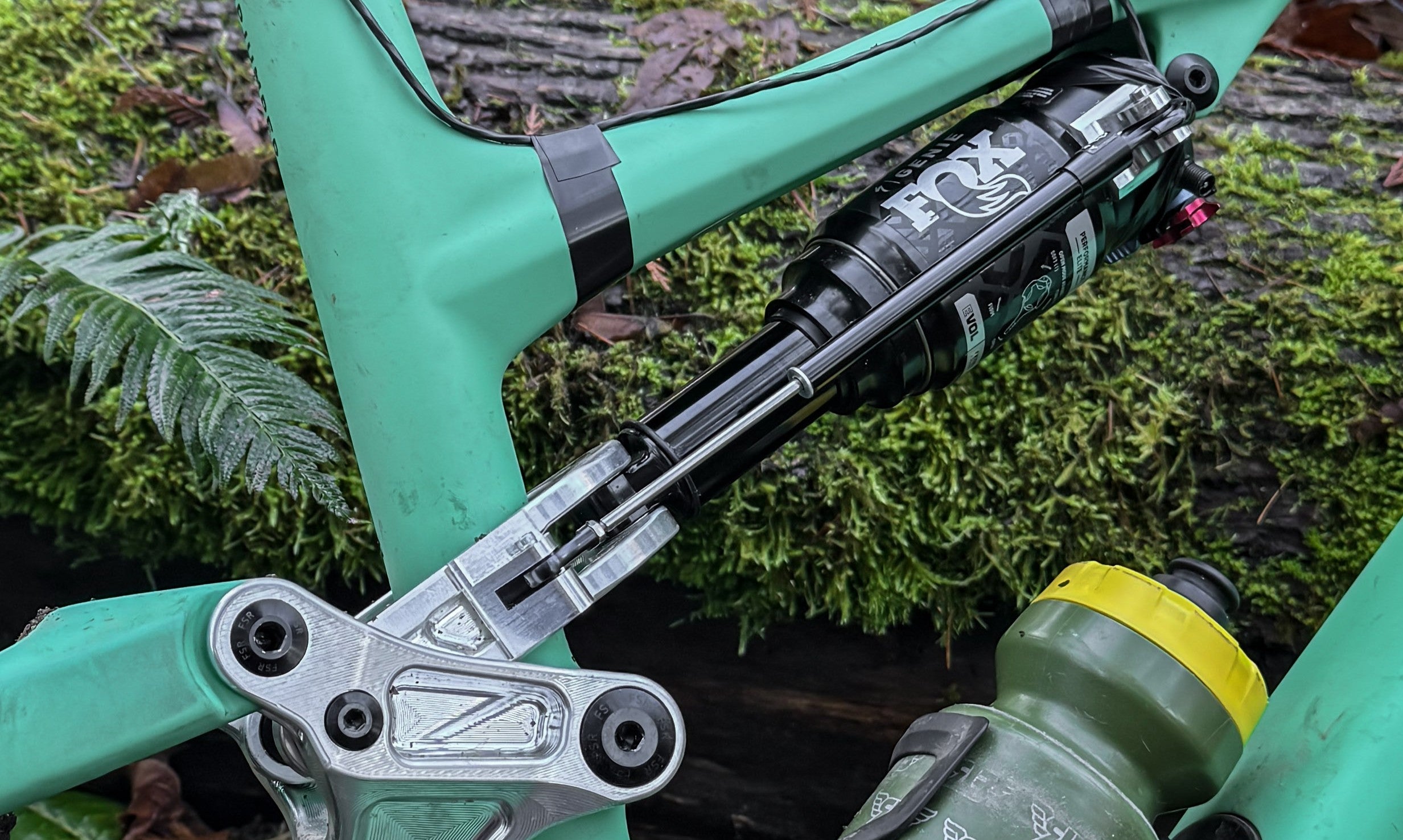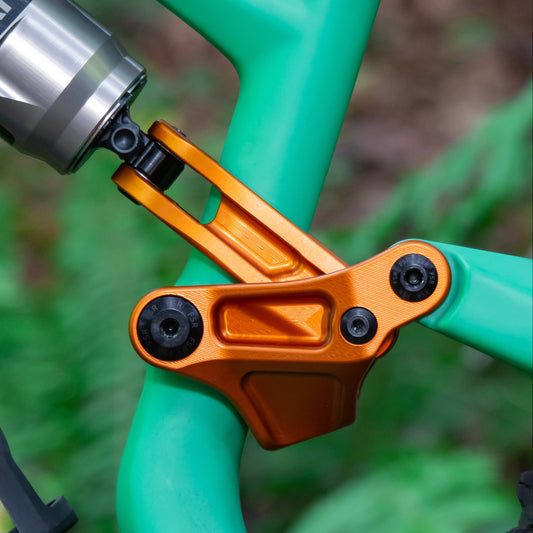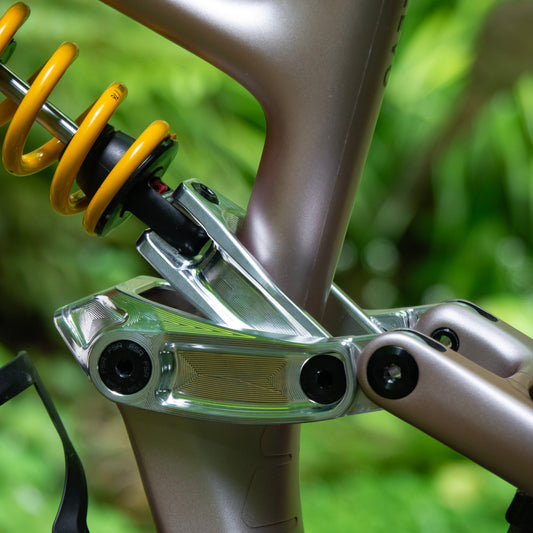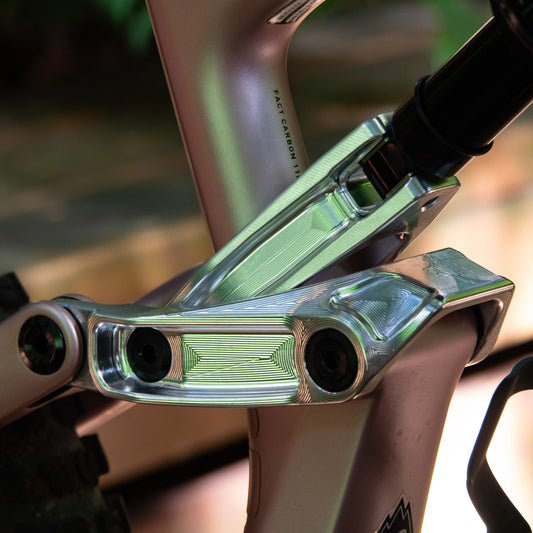2025 Stumpjumper Development

Behind the Scenes
Developing New Layouts
Always dreaming of how we can extract the maximum
With every bike we evaluate, we always run through a ton of options before anything hits the machines. Every now and then, something we've dreamt up stands out so much that we decide we just have to make it. The Turbo Levo long shock kit was one such example. Here is a look behind the scenes at how we developed our products for the new Stumpjumper.
Considering Different Impact Types
-

Small Bump
These are things like roots, small rocks, and braking bumps. Generally these impacts are high frequency. Our high pivot conversion showed smaller peak accelerations than stock or just the link and yoke. This is also a good demonstration of how a more progressive bike can be setup to handle large impacts without compromising small bump sensitivity.
-

Medium Impacts
Medium impacts consist of things like larger roots and rocks and are often what people consider square-edge impacts. This is where high pivot suspension really shines! Our high pivot conversion for the Stumpjumper passes through approximately 25% less acceleration than stock as it goes over obstacles like this. Our link and yoke also transmitted less to the rider, but not to the same degree as the high pivot.
-

Large Impacts
Drops to flat, g-outs, really big holes, and similar. This example is a drop to flat. In the data, you can see that the most progressive of the set ups (our link and yoke) sees the lowest peak accelerations (at least 16% less than stock). The least progressive (stock setup) sees the highest accelerations and the high pivot conversion falls in the middle. With the stock link, the accelerometer actually maxed out on this impact.
Why wheel acceleration?
We predominantly focus on wheel acceleration as measured on the seat tube just above the BB because we are working with the rear suspension. This is to give an accurate representation of what our feet are feeling while riding. Our testing has shown that looking at wheel travel used is not an accurate representation of what you felt riding without also knowing exactly what obstacles you are running over. In many instances the high pivot layout felt smoother while using less travel. The increased smoothness is evident in the acceleration data. This is the result of the front triangle staying more level as it goes over repeated impacts. More forward axle pathes have a tendancy to kick the rear up, making the subsequent impact use more travel than it would for that single impact on its own.

The Takeaways
- Rearward axle path helps the rear wheel clear obstacles, especially medium size ones, easier and transmits less impact back to the rider.
- Added progression helps significantly with large impacts without compromising small bump sensitivity. In it's stock form, the accelerometer on the frame hit it's maximum during the drop to flat. Extreme values are common when hitting the bottom out bumper hard.
- Real world riding is complicated. On trail you could experience any combination of these different bump types at the same time.
- Total amount of travel used does not necessarily correlate to smoother ride. In many instances the high pivot layout actually used less travel than the others on account of the chassis being more stable and not pitching fore/aft as much. This is why we focus on acceleration.
2025-Current Stumpjumper Suspension Products
-
Stumpjumper 15/Evo Link (2025-current)
Regular price $338.00 USDRegular price$0.00 USDSale price $338.00 USD -
Turbo Levo Long Shock, Gen 4 (2025-Current)
Regular price $369.00 USDRegular price$0.00 USDSale price $369.00 USD -
Turbo Levo Link, Gen 4 (2025-Current)
Regular price $369.00 USDRegular price$0.00 USDSale price $369.00 USD -
Stumpjumper High Pivot Conversion (2025-current)
Regular price $1,995.00 USDRegular price$0.00 USDSale price $1,995.00 USD







